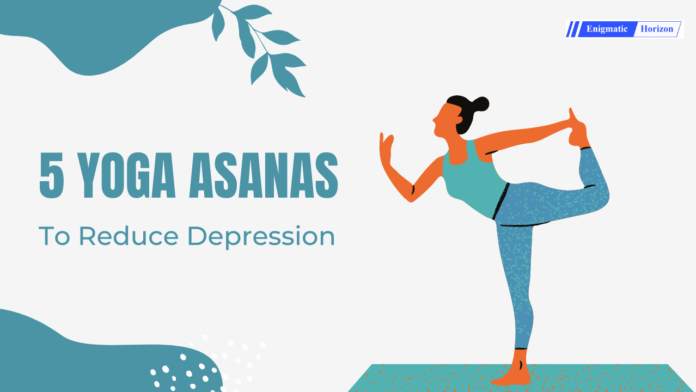Kakoli Roy
A powerful mind is at the core of a healthy body and gives it the strength to overcome mental, physical, and other related issues or hurdles. Yoga acts as a tool to recover from the worst health conditions and live a better life. Nowadays, more and more people are beginning to understand the importance of mental and physical health. Yoga asanas have multiple benefits when it comes to both mental and physical wellbeing. Driving your mind to maintain a schedule for five regular yoga asanas can be a life-changing experience for you. Read on to find out more.
Yoga asanas to reduce depression
The aim of performing or practicing yoga is to deliver positivity and get rid of negative energies. Practicing and performing yoga enables one to relax and improves mood. Elevating mood improvises the entire day’s activities, whether at home or the workplace. Position, movements, and postures are responsible for stimulating the nervous system, ensuring a happy mind and calmness. These days, depression is becoming a rising mental health concern, especially among the youth. Here are 5 yoga asanas that can help one combat it.
1. Adho Mukha Svanasana
The yoga asana is also known as the downward dog posture. It is considered popular for its benefits in reducing depression and anxiety. It also relieves tension from the neck, back, and shoulder and improves blood circulation. So it is added to the primary practices, or the beginning of the yoga asanas.
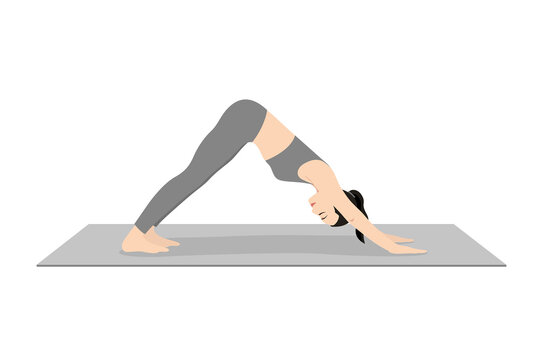
Steps to follow for Adho Mukha Svanasana
i) The name itself suggests the posture. The hands are on the mat, and the knees fold the leg on the mat. Similar to the dog’s standing position, the hands are straight to the shoulders and the knees to the waist.
ii) Spread the fingers with the support of the body on the palms and push the hips in an upward direction.
iii) While pushing the hips, stretching the hands, and lifting the knees upwards with the hips, the support for the position is shifted to the toes. The toes are on the ground, and the heels are up.
iv) The spine lengthens as much as possible, and the tailbone should reach the sky.
v) While gazing towards the belly or feet, the body should relax.
vi) Hold the position for a few minutes and then release the knees.
2. Setu Bandhasana
Setu Bandhasana posture, also known as Bridge Pose, provides fitness for all age groups. It is popular for starters or beginners. Developing calmness and alleviating the symptoms of anxiety and depression are the main benefits.
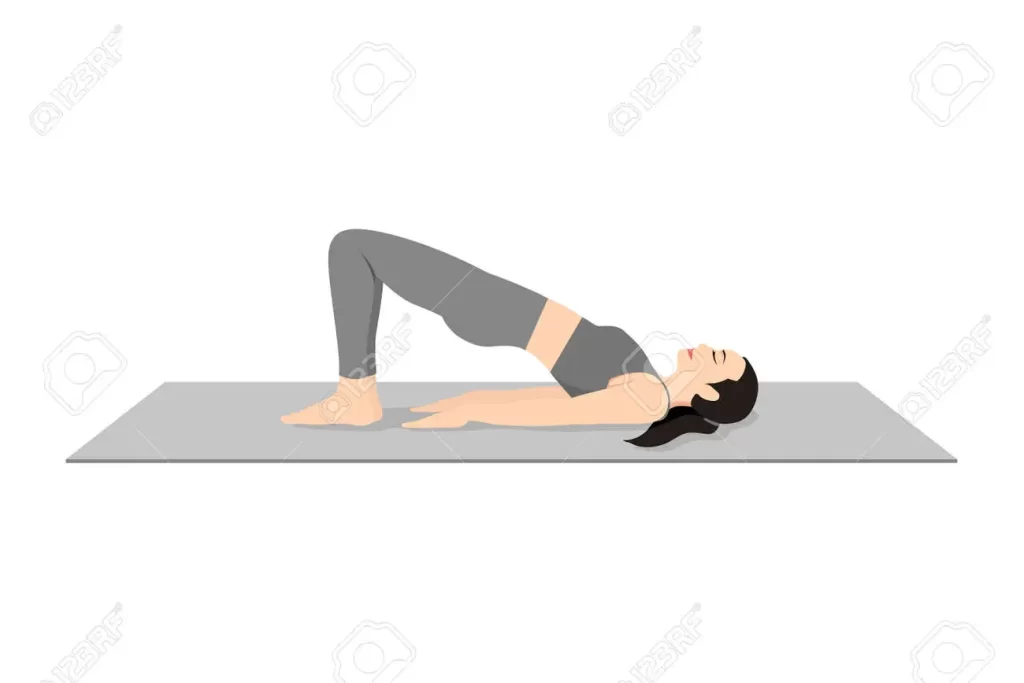
Steps to follow for Setu Bandhasana
i) Lie straight on a mat with the knees bent and feet on the ground. Keep the arms resting parallel to the body and the palms relaxing, facing upward.
ii) Form an arch by lifting the hips upward. Press the feet and the arms, and then push the hips up.
iii) Then, interlace the fingers and roll the shoulders.
iv). Press the arms on the ground and slowly try to lift the chest to the chin.
v) Hold the posture for a few minutes and then release the hands and the hips slowly.
3. Balasana
Balasana, the child’s pose, ensures significant benefits by relieving tension from upper parts such as the neck, back, and shoulders. The yoga asana reduces stress and anxiety, developing calmness in the mind.
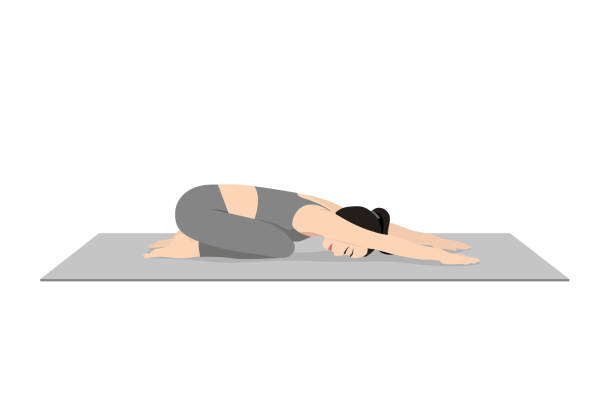
Steps to follow for Balasana
i) Keep the hands and knees on the mat, facing the floor.
ii) Sit on the heels by folding the knees, lower the body with extended arms straight up, and then bend frontwards, touching the ground.
iii) The forehead and the hands should touch the ground.
iv) Stay in the position for a few minutes and breathe in and out. Release the posture and relax.
4. Virabhadrasana II
Virabhadrasana II, the Warrior II pose, creates magic to increase the energy of a body. The pose helps to strengthen the legs, limbs, and feet. Ensures relief from backaches and sciatica and reduces anxiety and depression.
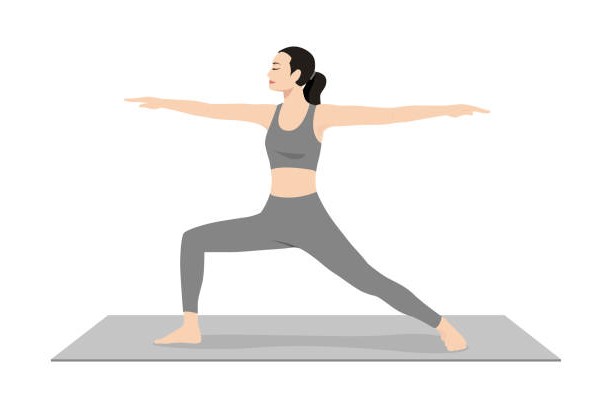
Steps to follow for Virabhadrasana II
i) Stand on a mat with your feet apart.
ii) Try to step the left foot backward, which is about 2-3 feet.
iii) Slowly bend the front knee, which is the right leg; the support should be on the ankle.
iv) Turn the palms downward, spreading the arms parallel to the ground, and turn the head to the right.
v) Hold the position for a few minutes, release the breath, and relax. Repeat it 10 to 15 times.
5. Vriksasana
Regular practice of Vrksasana, the tree pose, enables one to develop concentration, focus, and body balance. All age groups can practice it and increase their fitness levels.

Steps to follow for the tree pose
i) Apart from the legs, stand straight with arms extended to both sides.
ii) Lift the right foot and slowly shift the body weight to the left foot. Keep the foot of the left foot attached to the thighs after folding for balance.
iii) Join hands together and take deep breaths.
iv) Focus and hold your breath.
v) Release the pose and repeat on the right side.
Repeating all the yoga asanas for 10 minutes can improve focus and blood circulation and remove depression and anxiety.
Yoga asanas have the power to recreate life by removing all the negativity. The origin of yoga is in ancient India, but its benefits have made it popular worldwide. In modern times, anxiety and depression severely affect life. The causes reflect on health, which is reducing the human lifespan. The best way to reduce the intake of medicines and elevate the peace of mind and happiness is through yoga asanas.
